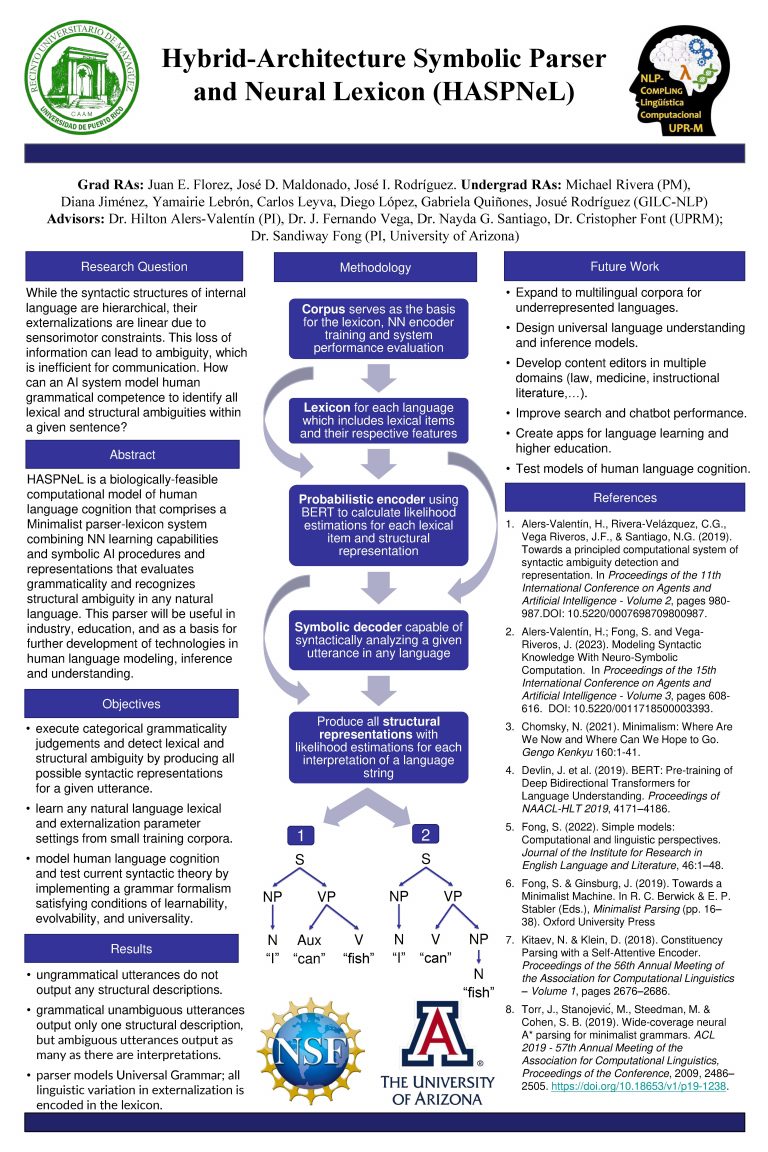While the syntactic structures of internal language are hierarchical, their externalizations are linear due to sensorimotor constraints. This loss of information can lead to ambiguity, which is inefficient for communication. How can an AI system model human grammatical competence to identify all lexical and structural ambiguities within a given sentence?
HASPNeL is a biologically-feasible computational model of human language cognition that comprises a Minimalist parser-lexicon system combining NN learning capabilities and symbolic AI procedures and representations that evaluates grammaticality and recognizes structural ambiguity in any natural language. This parser will be useful in industry, education, and as a basis for further development of technologies in human language modeling, inference and understanding
